Urban Food Strategy in the Making: Context, Conventions and Contestations
Abstract
1. Introduction
2. Literature Review
2.1. Alternative Food Networks
2.2. Urban Food Strategies
2.3. Economics of Conventions
3. Methodology and Context
Setting the Stage: Exit from Poverty While Losing Food Diversity
4. The Emerging of a New Urban Food Policy in Trento
4.1. Bringing the Context in: Considering the Conventions’ Fragmentation
4.1.1. Economic Context
“I believe that through co-operation of a certain role, a certain ability to give equity to agriculture has existed. I’m obviously speaking from our point of view. So through cooperation, we have succeeded over time in giving that dignity to the productive capacity to be able to bargain a fairer condition compared to the possible actions of traders and other sectors.”
“In addition to an increasing focus on something organic and natural, when we know very well that unfortunately for the city of Trento and its orographic characteristics it is not always possible to go organic. Organic vegetables yes, but they have other complications. Greenhouses are needed, major investments are required, and companies intending to make this investment need guarantees in the supply chain. How can we give companies the certainty that they will make significant investments to cultivate their land? The cooperation that currently exists in Trento gives these guarantees, gives this security”.
“Cooperation is envied all over the world, so cooperation has been and could be a great tool, so let’s say that cooperation at some point may have followed globalization, but now it is absolutely re-adapting and correcting itself. Cooperation is a great idea.”
“For many farmers, it is not acceptable to produce anything other than apples, because the cooperatives want apples, the market wants apples, what else do you think they will produce if not apples? At best cherries or grapes.”
“In my opinion, it is taking a direction that I am not enthusiastic about. They are all grandchildren with apple fields of 3–4 hectares. Even during my course, I was the only black sheep. I used to say what? The cooperative tells you what to do in your field? Are you kidding me? But why are you doing this?” and they said, “I don’t know, they told me I have to do it this way”. But that doesn’t make any sense, you have to be informed. Instead, you rely on third parties, also because of some ignorance. It seems that their main objective is to deliver these boxes of apples or grapes, and that’s it. It doesn’t matter how they are done, because that’s what their grandfather taught them, that’s what their father taught them, that’s what the consortium tells them to do, so that’s what they have to do, got it? Little interest. All the teachers used to say “you are on your own land, you must know what you are doing”. Because if you’re part of the cooperative and it tells you to use that specific product, you have to do it if you want to give the product—and you’ve already signed a pact with the devil and we’re not going to argue about that—but at least you know what the reason is.”
“That’s probably a problem with me not compromising. That’s not even a problem for them, because they’re so used to being puppets that they don’t realize this at all.”
“Talking with a farmer, he told me that the employees of the cooperatives, so the secretary, the manager, etc. have their salary regardless of how the season goes. Which is fair enough on the one hand. But on the other hand, the same regime doesn’t apply to farmers, because if you haven’t delivered your quintals of apples, you don’t get that amount. Maybe you didn’t deliver because there was a frost or a deer, I don’t know. There are A and B workers here, it’s asymmetrical and I don’t like that way of doing cooperatives.”
“Then there are many more contributions to the wine and fruit discourse. Just think of the hail policies. If you’re a horticulturist, you don’t take anything, if you go to the policy it costs you a lot of money and you don’t take anything home. If you are a fruit grower, the cooperative pays you, the province reimburses you for part of it and I swear, I know a lot of growers that pray for hail because they know they get more money than if they harvested. It makes me cry.”
4.1.2. Environmental Context
“I think the greatest tension was when the municipality said “we can’t say yes to organic and no to the others”, then there was a fracture.”
“In my opinion the organic issue was badly managed, or if it gave the impression at the beginning that it was possible to go in that direction and then absolutely not (…) in my opinion this led to the exhaustion of some people. Some exhausted people stayed, others gave up.”
“Since both the city farmers’ market and we at the solidarity economy were too sided on organic. If you try to favor direct products instead, it’s logical that the municipality won’t be able to choose only organic products. A lot of people on the other hand didn’t think it was wise and walked away.”
4.1.3. Cultural Context
“Many times people asked me in December: “do you have tomatoes?”, “no, they don’t exist in December”, “I found them at Poli (it’s a local supermarket chain, author’s note)”, “you found tomatoes at the supermarket because they come from Spain”. People feel very bad about it, and they’re people of a certain type. I could understand a 5-year-old’s astonishment because they’re from Spain, but I couldn’t understand it when I have to deal with many people of a different calibre.”
“The fact that people come up and go shopping in the fields, that takes more time and that time is better spent. When they come to my farm to do their shopping, they see that there are particular things and they ask why and I say ‘because they have properties’, ‘because you know some flowers keep away other insects, you can eat them etc.’ It would be much simpler if this were done in a large-scale way if people would go and buy things where they are produced.”
“Trentino lives, it is something that denotes it very deeply, a dual reality. It presents itself as a particularly welcoming place, particularly natural, but, the reality, especially in the urban area, is that some realities of the territory are disappearing, that the close relationship that is advocated is struggling to survive.”
“Trentino is and always has been guilty of a great presumption concerning the fact that it is always ahead of everyone else and has nothing to learn from others. In my opinion, it should look around a bit and see what is happening elsewhere and start to dismantle some prehistoric approaches that leave little room for innovation.”
“I think, for example, in South Tyrol, it works like this: the protection of the landscape, which has become one of the themes of territorial marketing, did not happen by building law to protect the environment, like the Bolzano Hill. How did it work? Great importance was given to the work of the farmer, so there was no overbuilding, the city did not expand on the hill. The peasant in this role was also helped and favored as an entrepreneur and farmer. In this way, a very complex and successful economic system has been built up, which has generated a very coherent landscape that tourists like so much. Without building law to protect the land, it was decided to protect the person. People remained on those steep meadows because the administration gave them a central role in defending that land, and even financed it. It’s not that agriculture survives without funding, but the result has been this: less money spent on hydrogeological disruption and a longer-lasting overall result, among other things, because it goes beyond electoral and legislative dynamics, because the father passes the farm to his son, it prospers and therefore also becomes a possibility for continued employment and these are effective tools. South Tyrol is a world apart, it is a German world with German law and care for nature that comes from the Nordic countries, which is, however, an important sociological and economic model that should be taken into account.”
“Just think that in Trentino intensive breeding is favored. There are 2,000,000 euro sheds where the Province gives a 50% contribution for construction, money which is not paid back because the milk is sold at 40 cents per liter, so try to imagine (…). The province gives you a million euro to sell the milk at 40 cents. In Alto Adige, they say: do you want to make milk? Do you want to be sustainable? Look, five cows, you can open a farm restaurant, a farm holiday center, you can do it. You can do it. Your income comes from tourism and the farm restaurant, you sell your milk for €1 per liter instead of 40 cents, the land is all clean, there are all nice houses, all fenced in, all tidy. Why? Because there is a different political thought behind it, which focuses on the well-being of people and animals. Because in a farmhouse with five cows there’s work to be done, but imagine a shed with 100 cows to be milked twice a day, with trucks coming and going.”
4.1.4. Political Context
“The state? I don’t think it should have a guiding role, indeed in many cases, it has caused disasters in our sector. I would say it should be an accompaniment. It should participate, but not primarily, it should be one of the actors.”
“It comes from an observation: all the systems of legislative protection have not worked overtime, indeed in many cases, they have generated the death of what was being protected or its slow extinction.”
“The state? It shouldn’t drug everyone with contributions, because the agricultural entrepreneur, as well, is an entrepreneur. He must have the business risk. You can’t tell me that if he doesn’t have the money from the CAP, the money from the subsidy, he won’t stand and shut down tomorrow morning. Then maybe he changes jobs because he becomes state-farmed, foraged, salaried. But this happens in all areas. We discovered it with the pandemic, and I was very disappointed. They go around Italy and everyone says “wow, you come from Trentino, that is, you come from a region that is doing well, it is safe, there is stability”. It’s all bullshit, in two months Trentino has failed. If Trentino failed in two months, it meant that it was steering by sight.”
“They all want to be farmers as long as there’s public funding, as long as there’s public aid and whatever else. Entrepreneurship means having a business risk.”
“I think we need a great deal of simplification, a great deal of simplicity of action, a great deal of fairness. This is fundamental, otherwise, it becomes complicated. Let the companies work.”
“For years we’ve been calling for deregulation, for years! Unfortunately, we talk about simplifying and reducing bureaucracy and we get the opposite effect. As the director always says, they simplify for themselves and complicate things for others. This is what has happened and this is what politics must do: give us a way to work, because we have reached the point where a farmer has to deal more with the bureaucracy than with the countryside and this is unacceptable.”
“The role (of the state) should be to identify these costs and project them onto the product because most people do not see the hidden costs behind the tomato. These should be identified by the state and projected onto the product, then in two days the world changes.”
“Support all these forms of new economies, not as residual forms, but as the only possible future. (The state) cannot afford to let these forms of economy, but also of welfare, go to waste, as fantasies or as proposals of informal groups with unconventional ideas. It is the future. So, active support and participation.”
“The state has to take charge of this, and then make laws that go in this direction, favoring a series of thoughts from the circular economy, to the discourse of non-waste and the environment, considering what it means to have no attention regarding these problems, the consequences are in the process of free fall so here we have to create the conditions in these levels.”
“I don’t believe in opposing the state. On the contrary, we need more aware administrators, politicians with less propaganda and more capacity. I think there should be a dialogue with the institutions.”
5. Discussion and Conclusions
Author Contributions
Funding
Institutional Review Board Statement
Informed Consent Statement
Data Availability Statement
Acknowledgments
Conflicts of Interest
Appendix A. In-Depth Interviews:
- Int01
- Local Solidarity Economy representative, female; date of the interview: 30 January 2020
- Int02
- Shopkeeper, female; date of the interview: 31 January 2020
- Int03
- Independent farmer, female; date of the interview: 31 January 2020
- Int04
- Civic association member, female; date of the interview: 3 February 2020
- Int05
- Civic association member, female; date of the interview: 3 February 2020
- Int06
- Farmers’ union representative, male; date of the interview: 4 February 2020
- Int07
- Civic Association member, female; date of the interview: 4 February 2020
- Int08
- Food Recovery NGO activist, male; date of the interview: 5 February 2020
- Int09
- Food Recovery NGO activist, female; date of the interview: 5 February 2020
- Int10
- Solidarity Purchase Group member, male; date of the interview: 15 February 2020
- Int11
- Trento City Council representative, male; date of the interview: 15 February 2020
- Int12
- Solidarity Purchase Group member, female; date of the interview: 23 April 2020
- Int13
- Local catering cooperative employee, female; date of the interview: 29 April 2020
- Int14
- Solidarity Purchase Group member, female; date of the interview: 30 April 2020
- Int15
- Farmers’ union representative, male; date of the interview: 28 May 2020
- Int16
- Farmers’ union representative, male; date of the interview: 28 May 2020
- Int17
- Trento City Council representative, female; date of the interview: 29 May 2020
- Int18
- Independent farmer, female, 7 attendances: 10 June 2020
- Int19
- Independent farmer, male, 5 attendances: 11 June2020
- Int20
- Independent farmer, male, 4 attendances: 17 June 2020
- Int21
- Civic association member, female; date of the interview: 08 July 2020
- Int22
- Municipal representative, female; date of the interview: 21 July 2020
- Int23
- Farmers’ union representative, female; date of the interview: 10 August 2020
References
- Food and Agriculture Organization. Global Food Losses and Food Waste—Extent, Causes and Prevention; FAO: Rome, Italy, 2011. [Google Scholar]
- Bloom, D.E.; Canning, D.; Fink, G. Urbanization and the wealth of nations. Science 2008, 319, 772–775. [Google Scholar] [CrossRef] [PubMed]
- Le Galès, P. Regulations and governance in European cities. Int. J. Urban Reg. Res. 1998, 22, 482–506. [Google Scholar] [CrossRef]
- Mount, P. Growing local food: Scale and local food systems governance. Agric. Hum. Values 2012, 29, 107–121. [Google Scholar] [CrossRef]
- Matacena, R. Linking alternative food networks and urban food policy: A step forward in the transition towards a sustainable and equitable food system? Int. Rev. Soc. Res. 2016, 6, 49–58. [Google Scholar] [CrossRef]
- Moragues, A.; Morgan, K.; Moschitz, H.; Neimane, I.; Nilsson, H.; Pinto, M.; Halliday, J. Urban Food Strategies. The Rough Guide to Sustainable Food Systems. 2013. Available online: https://orgprints.org/28860/ (accessed on 10 January 2021).
- Morgan, K.; Marsden, T.; Murdoch, J. Worlds of Food: Place, Power, and Provenance in the Food Chain; Oxford University Press: Oxford, UK, 2008. [Google Scholar]
- Goodman, D.; DuPuis, E.M.; Goodman, M.K. Alternative Food Networks: Knowledge, Practice, and Politics; Routledge: London, UK, 2012. [Google Scholar]
- Barbera, F.; Dagnes, J. Alternative agri-food networks in Turin and Piedmont. A matter of quality. Bolletino Soc. Geogr. Ital. 2017, 10, 169–179. [Google Scholar]
- Forno, F.; Maurano, S.; Vittori, F. Costruire processi partecipativi attorno al cibo: Le esperienze di Bergamo e Trento. In Lo Spazio delle Politiche Locali del Cibo: Temi, Esperienze e Prospettive; Dansero, E., Marino, D., Mazzocchi, G., Nicolarea, Y., Eds.; Celid: Torino, Italy, 2020. [Google Scholar]
- Kloppenburg, J.; Hendrickson, J.; Stevenson, G.W. Coming into the foodshed. Agric. Hum. Values 1996, 13, 33–42. [Google Scholar] [CrossRef]
- Grey, M. The industrial food stream and its alternatives in the United States: An introduction. Hum. Organ. 2000, 59, 143–150. [Google Scholar] [CrossRef]
- Hendrickson, M.K.; Heffernan, W.D. Opening spaces through relocalization: Locating potential resistance in the weaknesses of the global food system. Sociol. Rural. 2002, 42, 347–369. [Google Scholar] [CrossRef]
- McCarthy, J. Rural geography: Alternative rural economies-the search for alterity in forests, fisheries, food, and fair trade. Prog. Hum. Geogr. 2006, 30, 803–811. [Google Scholar] [CrossRef]
- McMichael, P. A food regime analysis of the ‘world food crisis’. Agric. Hum. Values 2009, 26, 281. [Google Scholar] [CrossRef]
- Hartmann, M. Corporate social responsibility in the food sector. Eur. Rev. Agric. Econ. 2011, 38, 297–324. [Google Scholar] [CrossRef]
- Renting, H.; Marsden, T.K.; Banks, J. Understanding alternative food networks: Exploring the role of short food supply chains in rural development. Environ. Plan. A 2003, 35, 393–411. [Google Scholar] [CrossRef]
- Ilbery, B.; Maye, D. Alternative (shorter) food supply chains and specialist livestock products in the Scottish-English borders. Environ. Plan. A 2005, 37, 823–844. [Google Scholar] [CrossRef]
- Whatmore, S.; Stassart, P.; Renting, H. What’s alternative about alternative food networks? Environ. Plan. A 2003, 35, 391–398. [Google Scholar] [CrossRef]
- Harvey, M.; McMeekin, A.; Warde, A. Qualities of Food; Manchester University Press: Manchester, UK, 2004. [Google Scholar]
- Marsden, T.; Banks, J.; Bristow, G. Food supply chain approaches: Exploring their role in rural development. Sociol. Rural. 2000, 40, 424–438. [Google Scholar] [CrossRef]
- O’Hara, S.U.; Stagl, S. Global food markets and their local alternatives: A socio-ecological economic perspective. Popul. Environ. 2001, 22, 533–554. [Google Scholar] [CrossRef]
- Goodman, D. Rural Europe redux? Reflections on alternative agro-food networks and paradigm change. Sociol. Rural. 2004, 44, 3–16. [Google Scholar] [CrossRef]
- Higgins, V.; Dibden, J.; Cocklin, C. Building alternative agri-food networks: Certification, embeddedness and agri-environmental governance. J. Rural Stud. 2008, 24, 15–27. [Google Scholar] [CrossRef]
- Maye, D.; Ilbery, B. Regional economies of local food production: Tracing food chain links between ‘specialist’ producers and intermediaries in the Scottish-English borders. Eur. Urban Reg. Stud. 2006, 13, 337–354. [Google Scholar] [CrossRef]
- Allen, P.; FitzSimmons, M.; Goodman, M.; Warner, K. Shifting plates in the agrifood landscape: The tectonics of alternative agrifood initiatives in California. J. Rural Stud. 2003, 19, 61–75. [Google Scholar] [CrossRef]
- Feagan, R. The place of food: Mapping out the ‘local’ in local food systems. Prog. Hum. Geogr. 2007, 31, 23–42. [Google Scholar] [CrossRef]
- Ilbery, B.; Maye, D. Retailing local food in the Scottish-English borders: A supply chain perspective. Geoforum 2006, 37, 352–367. [Google Scholar] [CrossRef]
- Atkins, P.; Bowler, I. Food habits, beliefs and taboos. In Food in Society: Economy, Culture, Geography; Arnold, Hodder Headline Group: London, UK, 2001; pp. 296–310. [Google Scholar]
- Knickel, K.; Renting, H. Methodological and conceptual issues in the study of multifunctionality and rural development. Sociol. Rural. 2000, 40, 512–528. [Google Scholar] [CrossRef]
- Norberg-Hodge, H. Think global—Eat local! Ecologist 1998, 28, 208–214. [Google Scholar]
- Ilbery, B.; Maye, D.; Kneafsey, M.; Jenkins, T.; Walkley, C. Forecasting food supply chain developments in lagging rural regions: Evidence from the UK. J. Rural Stud. 2004, 20, 331–344. [Google Scholar] [CrossRef]
- Sage, C. Environment and Food; Routledge: London, UK, 2011. [Google Scholar]
- Santini, F.; Guri, F.; Gomez y Paloma, S. Labelling of Agricultural and Food Products of Mountain Farming; Proyecto Encargado por la Dirección General de Agricultura, Pubblications Office of the European Union: Luxembourg, 2013. [Google Scholar]
- Born, B.; Purcell, M. Avoiding the local trap: Scale and food systems in planning research. J. Plan. Educ. Res. 2006, 26, 195–207. [Google Scholar] [CrossRef]
- Winter, M. Embeddedness, the new food economy and defensive localism. J. Rural Stud. 2003, 19, 23–32. [Google Scholar] [CrossRef]
- Marsden, T.; Morley, A. Sustainable Food System. Building a New Paradigm; Earthscan from Routledge: Oxfordshire, UK, 2014; ISBN 978-0-425-63955-2. [Google Scholar]
- Tregear, A. Progressing knowledge in alternative and local food networks: Critical reflections and a research agenda. J. Rural Stud. 2011, 27, 419–430. [Google Scholar] [CrossRef]
- Sonnino, R.; Spayde, J.J. The New Frontier? Urban Strategies for Food Security and Sustainability; Routledge: London, UK, 2014. [Google Scholar]
- Sonnino, R. Quality food, public procurement, and sustainable development: The school meal revolution in Rome. Environ. Plan. A 2009, 41, 425–440. [Google Scholar] [CrossRef]
- Marsden, T.; Sonnino, R. Human health and wellbeing and the sustainability of urban-regional food systems. Curr. Opin. Environ. Sustain. 2012, 4, 427–430. [Google Scholar] [CrossRef]
- Brunori, G.; Rossi, A. Synergy and coherence through collective action: Some insights from wine routes in Tuscany. Sociol. Rural. 2000, 40, 409–423. [Google Scholar] [CrossRef]
- Wilkins, J.L. Eating right here: Moving from consumer to food citizen. Agric. Hum. Values 2005, 22, 269–273. [Google Scholar] [CrossRef]
- Boltanski, L.; Thévenot, L. On Justification: Economies of Worth; Princeton University Press: Princeton, NJ, USA, 2006; Volume 27. [Google Scholar]
- Jagd, S. Economics of convention and new economic sociology: Mutual inspiration and dialogue. Curr. Sociol. 2007, 55, 75–91. [Google Scholar] [CrossRef]
- Blee, K.M. Democracy in the Making: How Activist Groups Form; Oxford University Press: New York, NY, USA, 2012. [Google Scholar]
- Istituto Nazionale di Statistica. Annuario Statistico Italiano. 2014. Available online: https://www.istat.it/it/files/2014/11/C01.pdf (accessed on 15 September 2020).
- Tarquini, S.; Isola, I.; Favalli, M.; Battistini, A. TINITALY, a Digital Elevation Model of Italy with a 10 m-Cell Size; Version 1.0; Istituto Nazionale di Geofisica e Vulcanologia (INGV): Roma, Italy, 2007; Available online: http://tinitaly.pi.ingv.it/Download_Area2.html (accessed on 16 September 2020). [CrossRef]
- Provincia Autonoma di Trento. Geocatalogo PAT. Sistema delle Aree Agricole—PUP. 2019. Available online: https://siat.provincia.tn.it/geonetwork/srv/ita/catalog.search#/home (accessed on 11 December 2020).
- Eurostat. Urban Europe: Statistics on Cities, Towns and Suburbs; Eurostat Statistical Books: Luxemburg, 2016; Available online: https://ec.europa.eu/eurostat/en/web/products-statistical-books/-/KS-01-16-69 (accessed on 8 June 2020). [CrossRef]
- Istituto Nazionale di Statistica. Risultati del Censimento Permanente della Popolazione. 2020. Available online: http://dati-censimentipermanenti.istat.it/ (accessed on 5 December 2020).
- Gretter, A.; Rizzi, C.; Favargiotti, S.; Betta, A.; Ulrici, G. Trento social commons. Community engagement as tools for physical and cultural relationships between rural and peripheral spaces. Rev. Géographie Alp. 2018, 2, 106. [Google Scholar] [CrossRef]
- Provincia Autonoma di Trento. Trentino Agricoltura—Organizzazione dei Produttori. Available online: http://www.trentinoagricoltura.it/ (accessed on 1 December 2020).
- Istituto Nazionale di Statistica. Atlante dell’Agricoltura Italiana: 6° Censimento Generale dell’Agricoltura; Stealth: Roma, Italy, 2013. [Google Scholar]
- Camera di Commercio Industria Artigianato e Agricoltura di Trento. Export: 2° Trimestre 2019: I Dati della Provincia di Trento. 2019. Available online: https://www.tn.camcom.it/content/export-2deg-trimestre-2019 (accessed on 14 September 2020).
- Programma di Sviluppo Rurale di Trento 2014–2020. 2018. Available online: http://www.psr.provincia.tn.it/Sviluppo-Rurale-2014-2020/Scarica-Materiale/PSR-2014-2020 (accessed on 10 October 2020).
- Provincia Autonoma di Trento. Servizio Statistica. La Produzione Lorda Vendibile dell’Agricoltura e della Silvicoltura in Provincia di Trento (2013). 2013. Available online: www.statweb.provincia.tn.it (accessed on 1 December 2020).
- Perini, A. Statistica del Trentino; Tipografia Fratelli Perini: Trento, Italy, 1852. [Google Scholar]
- De Bertolini, A. Terre Coltivate. Storia dei Paesaggi Agricoli del Trentino; Fondazione Museo Storico del Trentino: Trento, Italy, 2014. [Google Scholar]
- Leonardi, A. Il Landeskulturrat e le conoscenze agrarie nelle aree tedesca e italiana del Tirolo tra Ottocento e Novecento. In Le Conoscenze Agrarie e la Loro Diffusione in Italia nell’Ottocento; Zaninelli, S., Giappichelli, T., Eds.; G. Giappichelli: Turin, Italy, 1990; pp. 85–160. [Google Scholar]
- Leonardi, A. L’Economia di Una Regione Alpina. Le Trasformazioni Economiche degli Ultimi due Secoli nell’Area Trentino Tirolese; Itas: Trento, Italy, 1996. [Google Scholar]
- Grandi, C. Un aspetto dell’agricoltura trentina dell’800: La distribuzione delle colture agrarie. Atti Accad. Roveretana Agiati 1976, 14–15, 209–223. [Google Scholar]
- Apot. Chi Siamo. Available online: http://www.apot.it/chisiamo/ (accessed on 1 December 2020).
- Gios, G.; Santuari, A. Agricultural cooperatives in the County of Trento (Italy): Economic, organizational and legal perspectives. J. Rural Coop. 2002, 30, 3–12. [Google Scholar]
- Povellato, A.; Tantari, A. Indagine sul Mercato Fondiario in Italia: Rapporto Regionale 2017; Consiglio per la Ricerca in Agricoltura e l’Analisi dell’Economia Agraria: Roma, Italy, 2018.
- Alessandrini, S.; Patrizia, B.; Samuel, B. The Co-Operative Model in Trentino (Italy). A Case Study; OECD: Trento, Italy, 2014. [Google Scholar]
- De Devitiis, B.; Maietta, O.W. Regional patterns of structural change in Italian agriculture. In Agriculture in Mediterranean Europe: Between Old and New Paradigms; Emerald Group Publishing Limited: Bingley, UK, 2013. [Google Scholar]
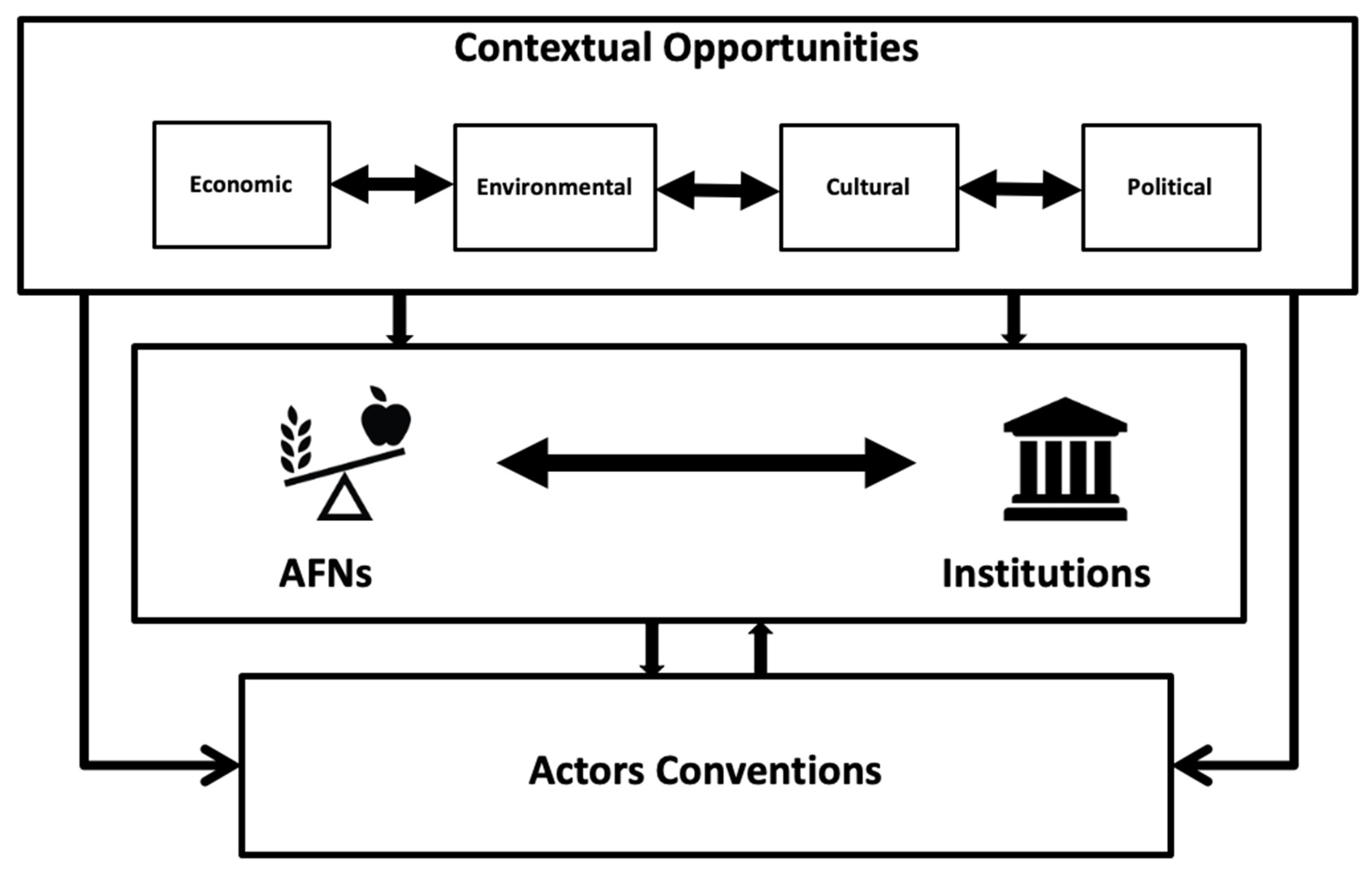
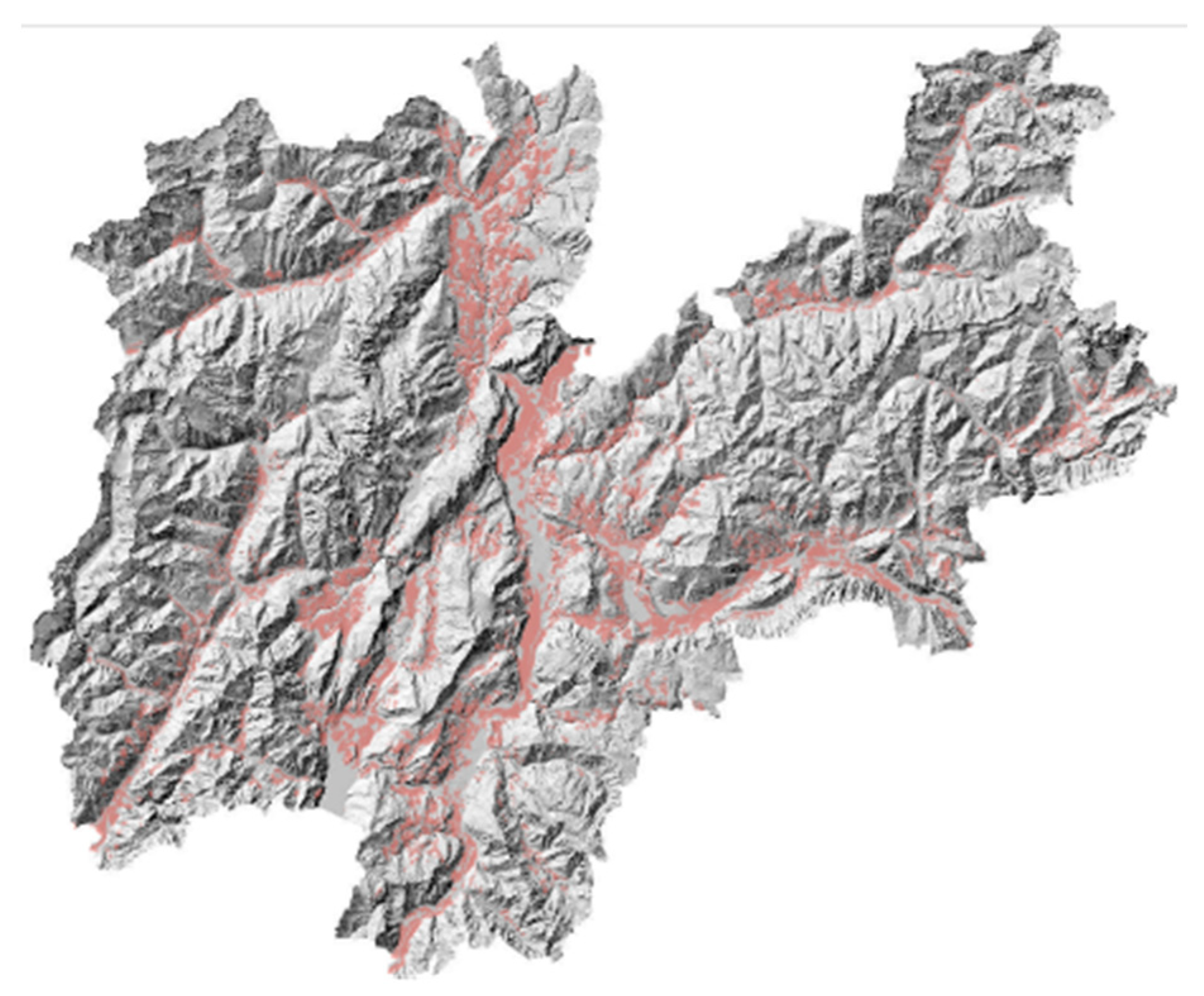
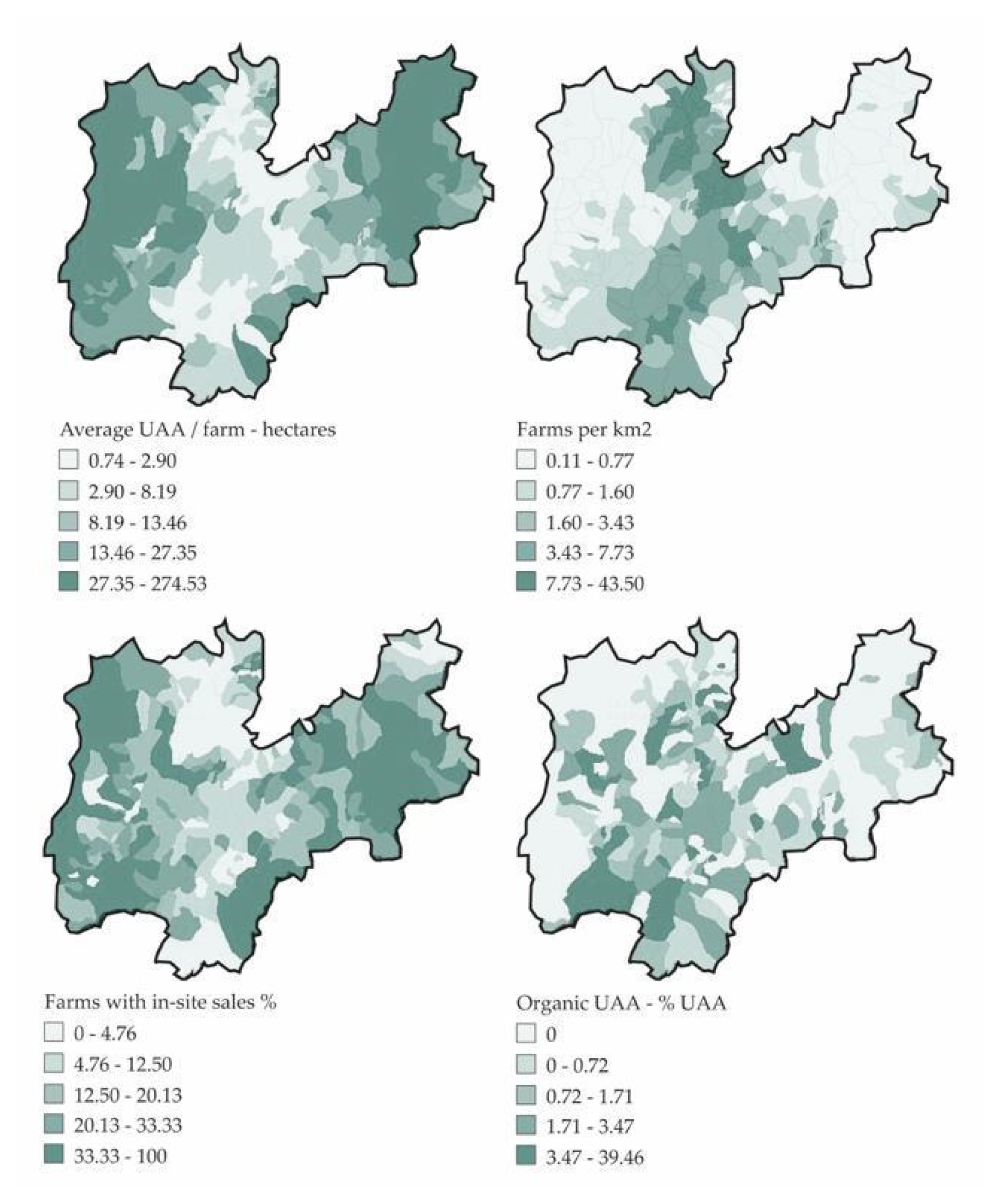
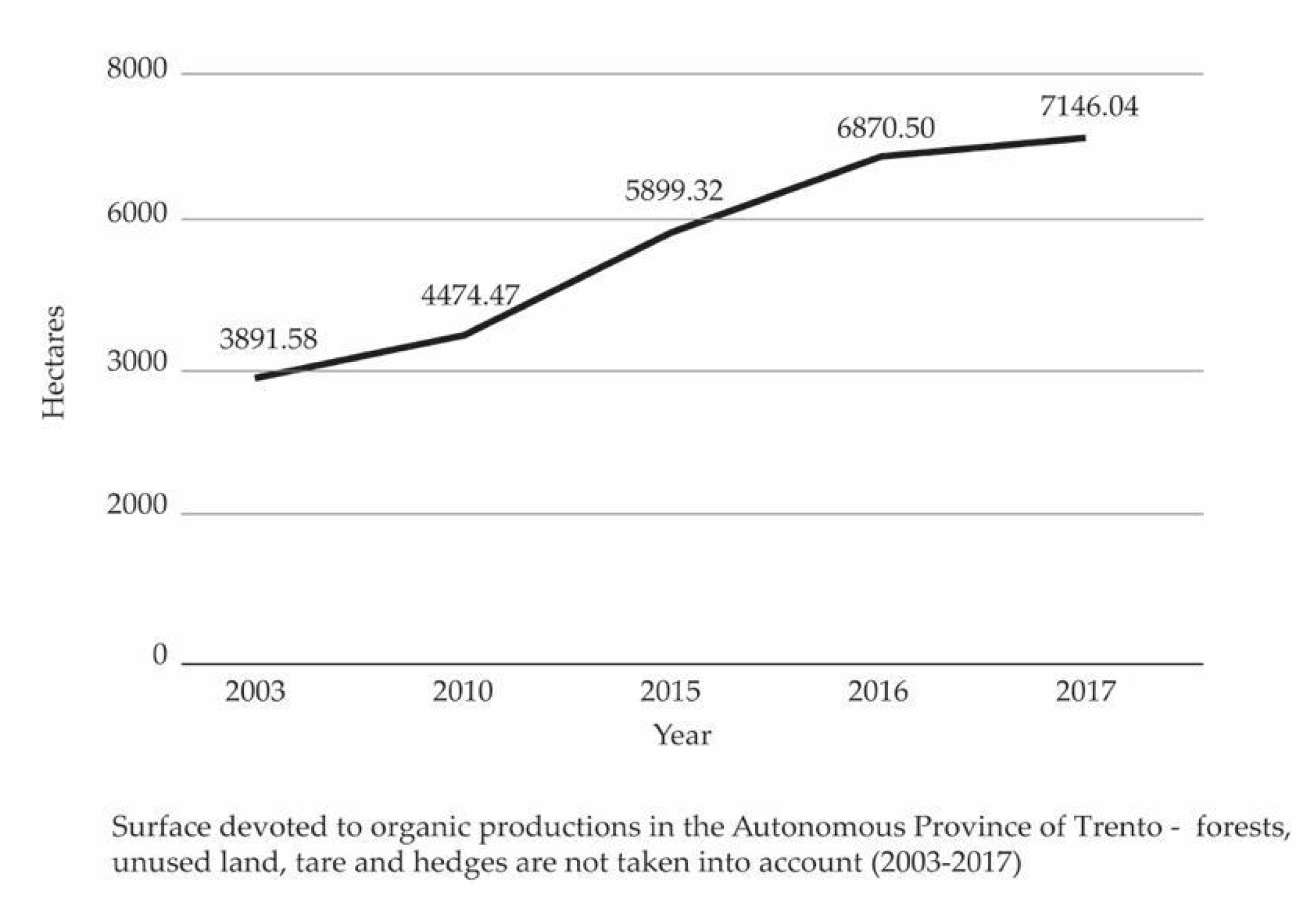
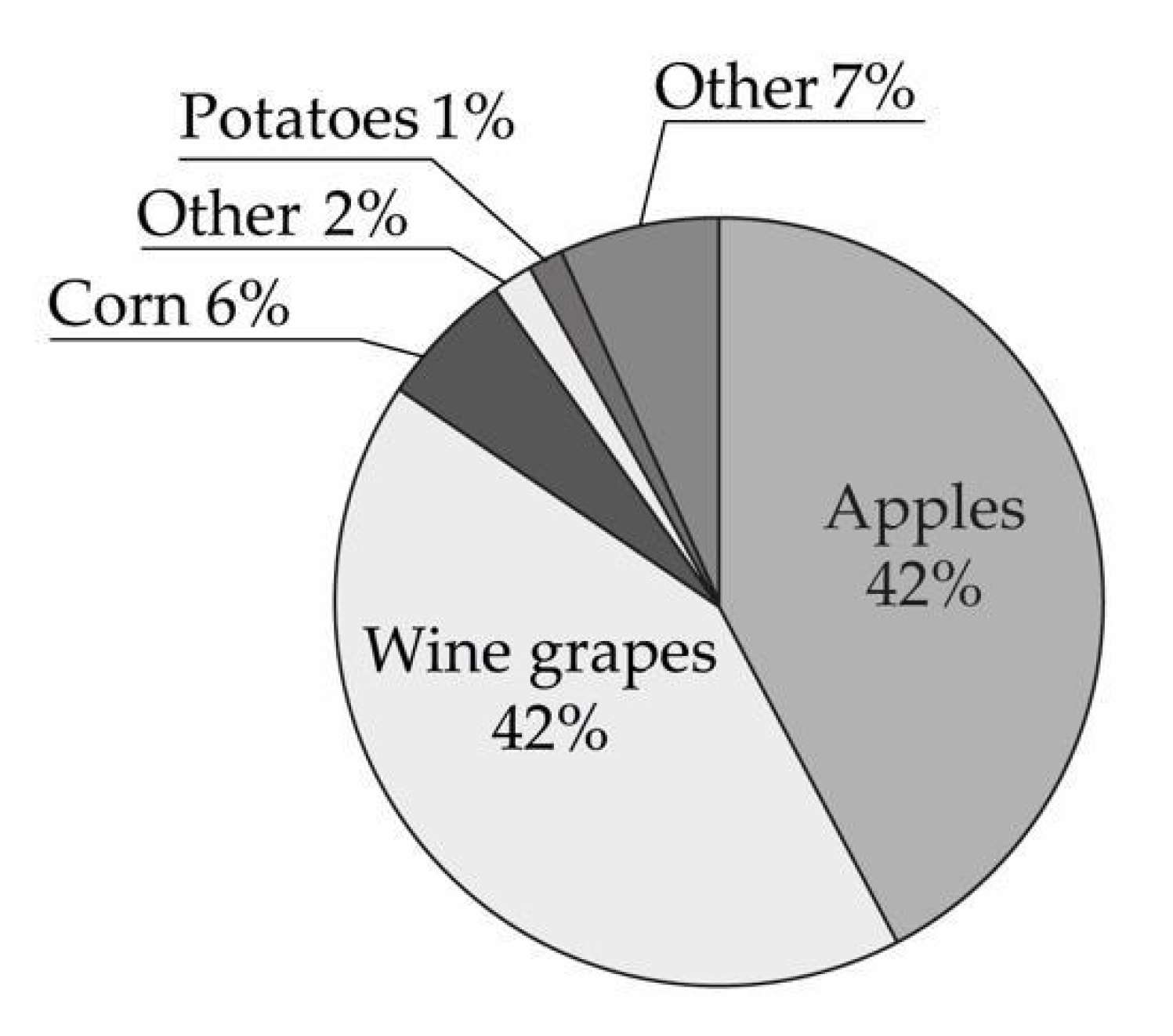
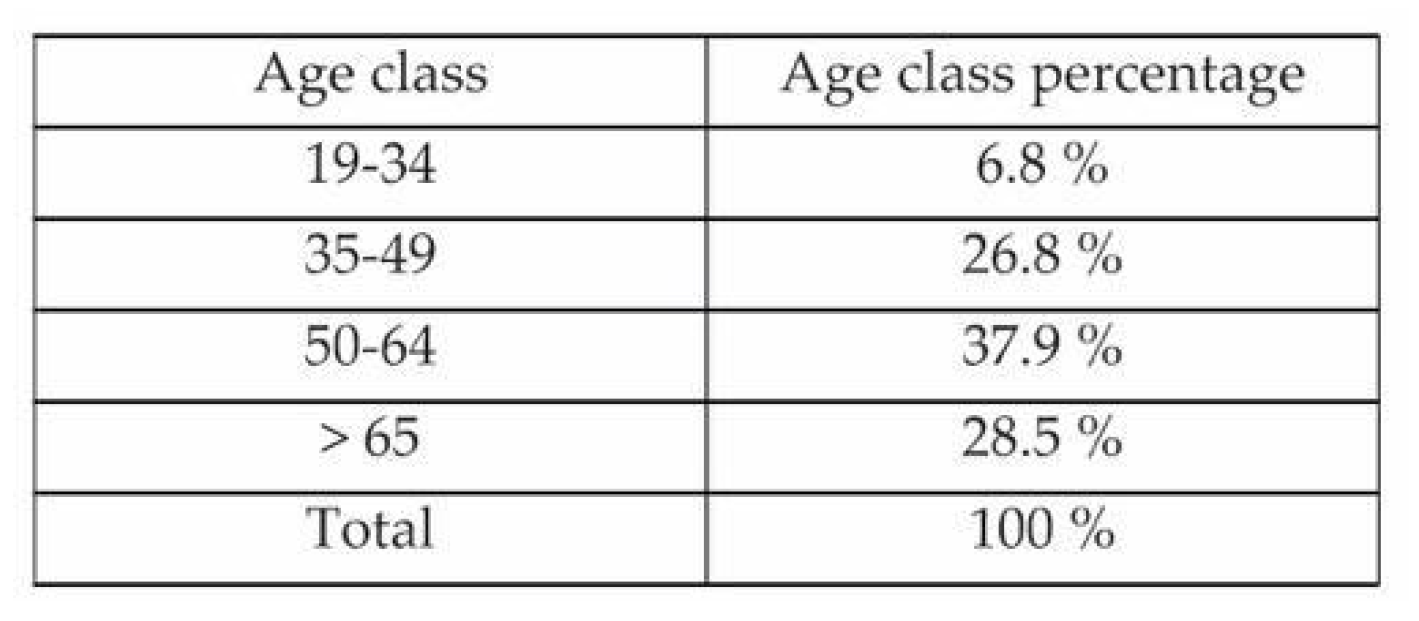
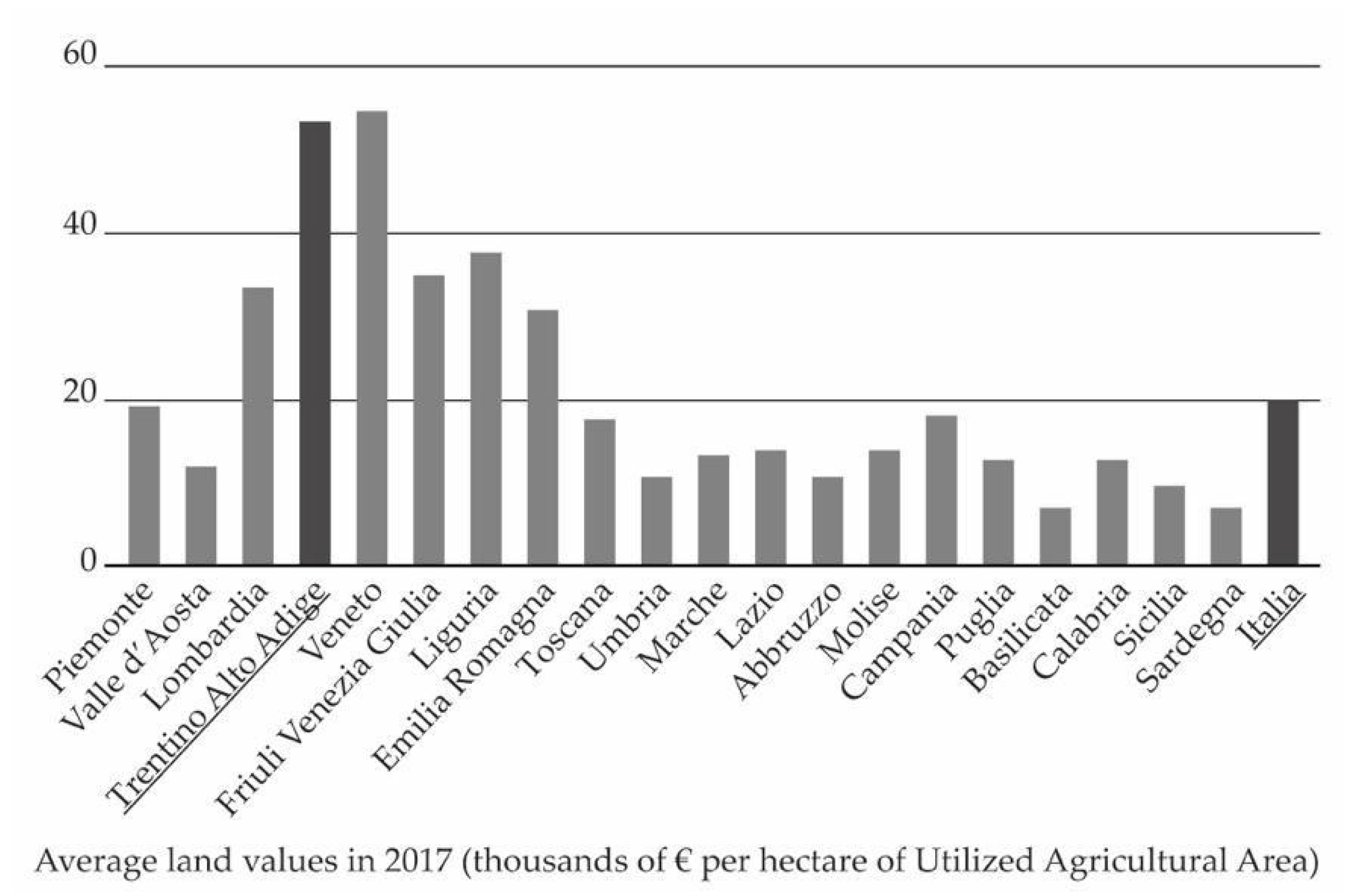
Publisher’s Note: MDPI stays neutral with regard to jurisdictional claims in published maps and institutional affiliations. |
© 2021 by the authors. Licensee MDPI, Basel, Switzerland. This article is an open access article distributed under the terms and conditions of the Creative Commons Attribution (CC BY) license (http://creativecommons.org/licenses/by/4.0/).
Share and Cite
Andreola, M.; Pianegonda, A.; Favargiotti, S.; Forno, F. Urban Food Strategy in the Making: Context, Conventions and Contestations. Agriculture 2021, 11, 177. https://doi.org/10.3390/agriculture11020177
Andreola M, Pianegonda A, Favargiotti S, Forno F. Urban Food Strategy in the Making: Context, Conventions and Contestations. Agriculture. 2021; 11(2):177. https://doi.org/10.3390/agriculture11020177
Chicago/Turabian StyleAndreola, Mattia, Angelica Pianegonda, Sara Favargiotti, and Francesca Forno. 2021. "Urban Food Strategy in the Making: Context, Conventions and Contestations" Agriculture 11, no. 2: 177. https://doi.org/10.3390/agriculture11020177
APA StyleAndreola, M., Pianegonda, A., Favargiotti, S., & Forno, F. (2021). Urban Food Strategy in the Making: Context, Conventions and Contestations. Agriculture, 11(2), 177. https://doi.org/10.3390/agriculture11020177







